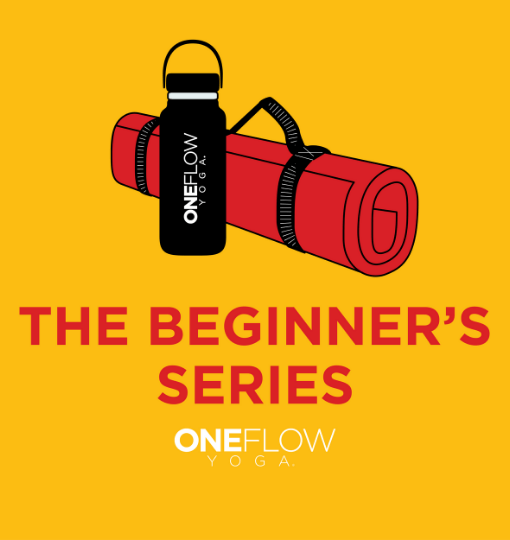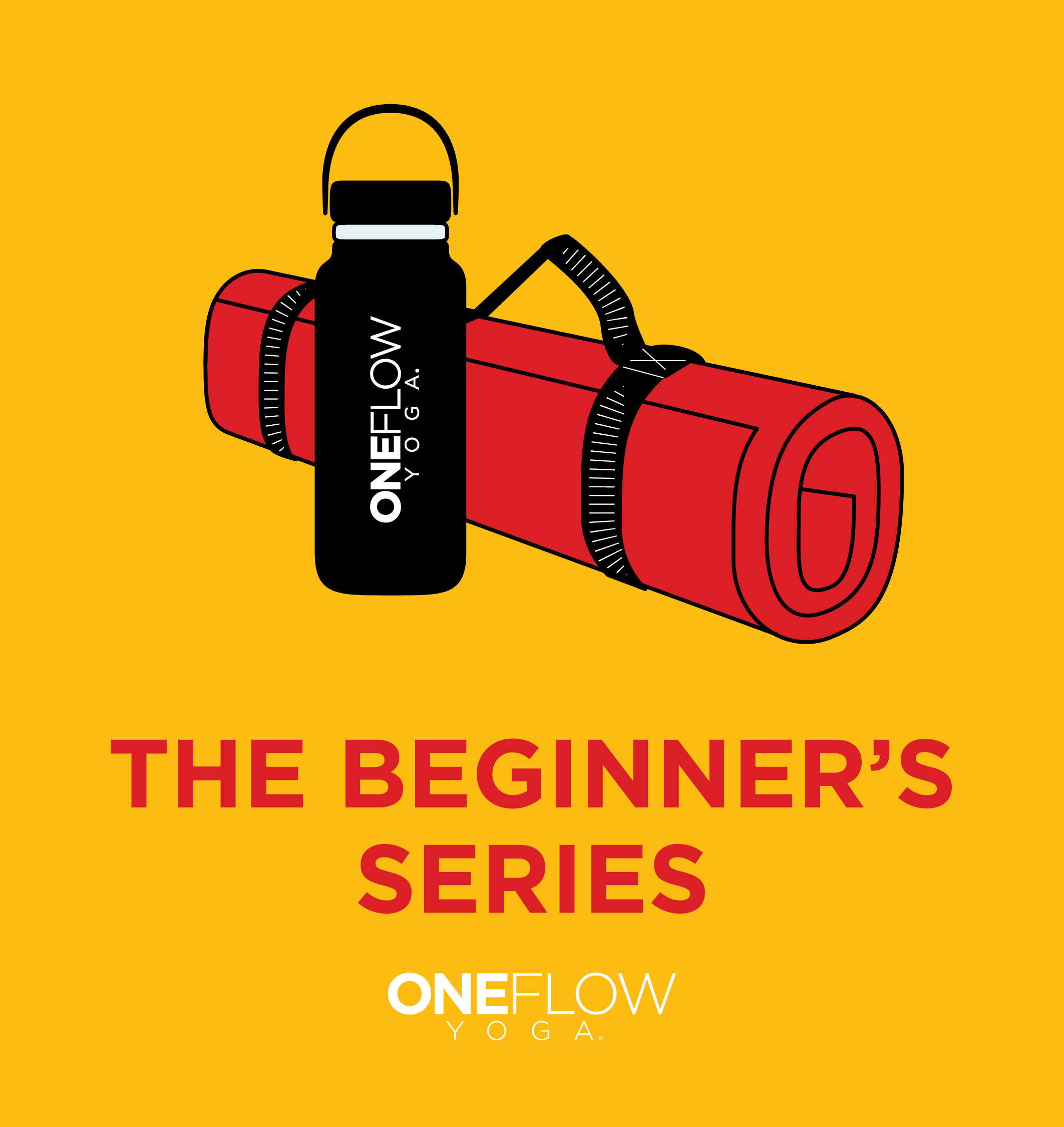How can you use the benefits of yoga? Take Steve Austin, astronaut. “A man barely alive…we can rebuild him. We have the technology. We have the capability to make him the world’s first bionic man a yogi. Better than he was before. Better. Stronger. Faster.”
The 1970s’ Six Million Dollar Man notwithstanding, yoga has the potential to improve your level of fitness, reduce your stress, and relieve your lower back pain. That’s just a taste of what yoga can do. In short, yoga can change your life.
I’ll let you in on a big secret. Even though the benefits of yoga are real and profound, most people will not get them. But with just a little knowledge and a shift in how you approach yoga, you can unlock the true potential of yoga.
By the time you’re done reading, you’ll know more about the benefits of yoga, including some never mentioned, and you’ll learn how to to get them.
What are the Benefits of Yoga? And are they worth it?
Before we go further, we have to describe how this topic is typically handled–like a buffet in Vegas.

There are lists. Countless lists.
Here are a few of the benefits of yoga from actual lists:
- Improves your flexibility
- Helps you sleep better
- Boosts your immune system
- Relieves anxiety
- Lowers cholesterol, triglycerides, glucose
- Improves your sense of style
- Makes you smell better
- Whitens your teeth and tastes great
Actually, I made the last three up but did anyone notice?
I suppose the idea is to list every benefit, and then you pick whatever you want to put on your plate. This brings us to to the problem with lists because the thinking is:
“Here are the benefits of yoga.”
“If you practice yoga, you will get all of the benefits.”
That’s like saying if you have a car, you get all of the “car benefits.” Some cars are incredibly fast, but not most. Some cars will take you up a mountain–but not many. Heck, some cars are not even reliable as cars.
Just because you “do yoga” doesn’t mean you will get the benefits. There’s more to it. How you practice becomes paramount.
How you practice yoga matters.
In reality, it’s more likely you want to know if yoga can help with fill-in-the-blank. Does yoga help with fibromyalgia or PTSD? Can yoga address high blood pressure, or does yoga increase endurance. Is yoga good for injury prevention?
Yoga can alleviate many conditions, but not all yoga may be equally effective at doing so. For that, you need to ask a different kind of question. See better questions below.
Yoga went from being this little known entity twenty years ago to regularly showing up pop culture in everything from Modern Family to Tom Clancy’s Jack Ryan.
People now know yoga is good for you.
Not only is yoga seen as improving your overall wellness, but people are backing it up by doing it. Based on current trends, the number of yoga practitioners will surpass 55 million people in the U.S. in 2020. That’s up more than 300% in 12 years.
Yes, it’s not just your neighbor, it’s your roommate, co-worker, and even your dad who practices yoga.
Why Do People Practice Yoga?
Ask people why they practice yoga, and here’s what they say:
- Release Tension
- Get stronger physically and mentally
- Reduce stress
- Feel Happier
Also from the same survey, “A whopping 86% report experience a positive improvement in mood after doing yoga, and 43% say they feel very happy after yoga.”
Whoa! If I were to tell you that I knew of an activity that strengthens your body and mind, relieves your stress and tension, and leaves you feeling happy and in a positive mood after doing it–wouldn’t you want to try it? Absolutely.
But wait, there’s more because we are just getting warmed up.
Selling the Invisible
The challenge with defining benefits is a result of yoga being a service.
Services, by their nature, are invisible. You’re not going to see a YouTuber giving a review of yoga with upbeat music, mood lighting, and an epic product shot because there’s no product.
And the quality of the service you receive can be inconsistent.
It’s up to the teacher to deliver the service of yoga, and the choices they make have consequences for what you end up with as a student. Their choices also determine if you get the benefits.
Adding to the confusion are these factors:
- Yoga can be interpreted in different ways.
- Most people have only taken a yoga class from one or two places.
Yoga can mean everything from meditation to something vigorous and sweat-inducing. For simplicity, I’ll assume we’re talking about yoga as a physical practice, a.k.a. asana.
The second point gives us a reference point. You may know the familiar cuisines from Mexico, Italy, and China-at, least the Americanized versions of them. But how often have you eaten at an Ethiopian restaurant or one featuring the food from Burma?
I might trust your praise for a taqueria but would be a little suspect of your review of a Vietnamese establishment. Side note, the best burrito in the United States hails from San Francisco.
When yoga comes to mind, we think it’s all the same because we don’t have a lot to compare it with. In reality, yoga varies wildly, even if we are speaking of only the physical practices.
Other than online self-reported surveys, how do we determine if the benefits of yoga are real? Here we turn to science.

The Science of Yoga
At One Flow Yoga, we’re big fans of science. We turn to it to help us make sense of the world, and it can help us understand yoga.
Recall your early scientific training in school. With science, you know you are never going to get certainty. There is never an absolute “YES!” Yes, these are the benefits of yoga–without a doubt.
Because that’s not how science works. The best you can hope for is “may,” “could,” or “can.” “Yoga can help reduce lower back pain,” for example.
“In fact, when it comes to science, proving anything is an impossibility.“
Ethan Siegl, American theoretical astrophysicist.
Designing a scientific yoga study is a challenge because:
- Yoga means so many different things. Some classes get your heart rate up and can be considered high-intensity interval training (HIIT), and some are so gentle they feel like a spa day. Both can be good for you–one increases your fitness level, and one relaxes you and can help to reduce stress.
- How do you tell the effort someone is putting in?
- How do you do a double-blind, placebo-controlled, randomized test?
When you design an experiment, it’s helpful to isolate one variable at a time to know if the variable you are testing is having an effect. You can control the factor in the first condition above, but the results would only pertain to that one style.
If your test subjects did a power yoga class for sixty minutes three times a week for eight weeks and you found the average V02 max improved by fifteen percent, you couldn’t apply that to a yin style class.
The second factor, “how do you tell the effort someone is putting in,” matters because the benefits you receive depend on your knowledge, experience, and skill.
I’ve practiced yoga for so long and have a depth of knowledge about anatomy, physiology, and biomechanics that I can make any class challenging for myself. But I’m an anomaly because this is what I do for a living. Most students won’t have that knowledge, so you rely on the teacher’s skill to elicit effort.
Number three is the most problematic. Double-blind experiments are the gold standard of experimental design and are considered the most reliable type of study. Double-blind means both the researchers and participants do not know who is assigned the treatment protocol. But chances are, you can probably figure out if you are doing yoga or not.
Fortunately, there are other types of experimental designs—each with its pros and cons.
For context, this study is emblematic of what you run across in the science of yoga.
It’s from a journal, Complementary Therapies in Medicine. The design they used was anonymous online surveys. Uh oh. Self-reporting again.
The population they surveyed is revealing.
4307 randomly selected individuals from 15 US Iyengar yoga studios. 84.2% female. 89.2% white. 87.4% well educated.
These results might not extend to the greater population. They might not even apply to other types of yoga besides Iyengar.
Where does that leave us? First, we can get a big picture perspective on yoga’s benefits if we aggregate the studies. Vox did that and found
“Yoga is probably just as good for your health as many other forms of exercise. But it seems particularly promising for improving lower back pain and — crucially — reducing inflammation in the body, which can actually help stave off disease. Yoga also seems to enhance “body awareness,” or people’s sense of what’s going on inside themselves.“
Vox.com
The reduction of inflammation is HUGE. While inflammation is a defense mechanism in your body, “inflammation has long been recognized as a major cause of disease.”
The word for knowing what’s going on inside of yourself is interoception or what can be thought of as the body-mind connection. It might seem obvious that you always know how you feel inside of you, but that’s not true. Interoception is a skill you develop and is a key to learning to work with stress and anxiety. [put link to course]
If the science of yoga interests you, head over to Google Scholar, where you can surface all kinds of studies. To help make sense of things, here are two resources:
Vox: 8 Ways to be a more Savvy Science Reader
How to read and understand a scientific paper: a guide for non-scientists
Overlapping Disciplines
Another helpful approach to ferret out benefits is remembering yoga overlaps with a variety of disciplines. Thus, when you practice yoga you also get the benefits of:
- Meditation and Mindfulness
- Relaxation and Stress Reduction
- Exercise and physical activity
We can use the numerous resources on exercise science, for instance, to figure out how a physical practice of yoga might help you. Or we might turn to the scientific literature on meditation to find benefits that also apply to yoga.

Yoga As A Miracle Pill
It bears repeating, the benefits of yoga are real.
But yoga is not a miracle pill.
As a society, we’ve been looking for the miracle pill forever.
You know the one, the one that allows you to eat whatever you want without gaining weight.
The pill that allows you to skip exercise while staying toned and trimmed.
The one thing you can take to keep you young, vibrant, and sexy.
[graphic medicine bottle with yoga cures all]
I want a new drug
One that does what it should
One that won’t make me feel too bad
One that won’t make me feel too good.
Huey Lewis, I Want A New Drug
Alas, no pill like that exists.
There are a lot of dubious claims out there that remind you that the buyer should always beware.
“A New Yoga Class is being offered in New York in which people exercise with goats. The way it works is it doesn’t.“
Michael Che Saturday Night Live.
Miracle pills, like get rich quick schemes, are best avoided.
Yoga Benefits Based on Experience
“If you would know the road ahead, ask someone who has traveled it.”
Chinese Proverb
“Do you have 20 years of experience? Or 1 year of experience repeated 20 times?“
Unknown
Based on my own experience teaching tens of thousands of students since 2005, here are the benefits people want from yoga.
- To move and feel good in your body.
- To be flexible enough that you can move like you did when you were a kid.
- To be able to do what you want with your body. If you’re going to hike a mountain or swim with your kids in the ocean, you have enough strength and fitness to do that.
- To age well. This means keeping your mind sharp, carrying your own groceries, and performing the six activities of daily living.
- To be able to process the stresses of life and let them go so you can relax.
- To enjoy and deepen your relationships, including with yourself. To be able to forgive, have less shame, and find more love and joy.
- To find community and a sense of belonging. You want to know you are part of something bigger than yourself.
- To live a meaningful life.
I have repeatedly witnessed how yoga can help you do these things.

Categories of Benefits
This is not a definitive list of benefits. Instead, we’re going to look at some board categories and give you strategies.
And every time you practice yoga, you’re always going to get more than one benefit.
Yoga is a kind of head-fake. You think it’s one thing, but it’s really another.
You come to the practice because you think you want more flexible hamstrings or learn to do a handstand. Along the way, you may notice the things that used to bother you don’t. You are a little easier on yourself, and you are kinder in general.
It’s a change others notice too, which is why students frequently tell us their families insisted that they come to yoga today.
The head-fake phenomenon is everywhere, like when we put our children on sports teams. Yes, some parents dream of having the next superstar athlete. And the kids think they are playing a game.
But for parents, we want our children to have the experience of being part of something bigger than themselves, the team. We want them to learn to be gracious and humble in winning and losing alike. We want them to show up for others and know that your effort and “how you play the game” matters.
Physical
Strength
You will get stronger if you practice yoga regularly. Besides physical strength, there’s being mentally, emotionally, and spiritually strong. In difficult times this will give you the resources to press on. In celebratory times it will allow you to savor and enjoy the moment more fully.
If your goal is to increase your physical strength, you’ll want to embrace the concepts of progressive overload, variable loading, and tissue adaptation to begin with. It might be easier for all of these benefits to simply find a teacher who knows the concept well.
Flexibility
Want to improve your flexibility? No problem. Focus on active stretching and explore the end of range motion as a place to work. Being flexible is related to two major components, your nervous system’s response and strength.
Weight Loss
Can you lose weight with yoga? Perhaps, but physical activity is only one component of weight loss. You can seek a more active type of yoga, such as vinyasa, power, or ashtanga. But addressing caloric intake, or what you eat, is a more effective strategy. Couple conscious nutrition with yoga to manage weight loss more effectively.
Disease
Yoga has been found to lower inflammation in the body. This is an interesting one because I don’t see it cited often, but it can significantly affect your health.
A lot of disease comes back to inflammation.
“Proinflammatory markers have been associated with unfavorable cardiovascular outcomes in HF (Heart Failure)”
Paula R. Pullen, Ph.D.
Translation if you have a lot of inflammation, you could die–that would be the unfavorable outcome when your heart is failing.
“The addition of an organized program of yoga for 8 wk (in addition to standard medical care) led to an improvement in…exercise capacity, flexibility, and reduced inflammation markers.”
Pregnancy
Yoga postures, asana, ask you to move in a variety of unique positions such as forwards, backward, sideways that make it easier to give birth. Giving birth is an athletic endeavor.
Injury Rehabilitation
People say, “we do a lot of movements in yoga that my physical therapist has me doing.” That’s by design and more common to the way we teach at One Flow Yoga.
Recovering from an injury is as mental and emotional as physical, especially if you’ve been a very active person. We like to think injuries can’t slow us down, but they need to. I can’t tell you the number of times I’ve seen people injure a limb and then overcompensate and injure the other side’s limb too.
If your goal is to repair an injury, you’ll want to know the different phases you’ll go through.
The initial inflammatory response begins immediately after you’re injured and can last from 3-7 days. The next phase lasts 4-6 weeks, and the final stage can linger as long as 3 years.
The middle phase is where you want to avoid excessive strain, or you could reinjure yourself and end up back in stage 1.
While RICE (rest, ice, compression, and elevation) used to be the recommendation for injury, today we recognize that mobility and loading are necessary.
Like any of these topics, this is a longer conversation.
Regularity
This one is a bonus because moving your bowels is important. Yoga works in a few ways to help you. First, it’s physical exercise, which always helps movement. Yoga also lowers the stress response, which can make it easier to go. And the twists and stretches help to move things along.

Mental
Build Resilience. Grit. Mental Toughness
Want to give yourself a mental edge? Practice yoga. Here’s how to do it. You’ll want to find the challenge in the physical poses, then, and this is essential, you’ll want to relax. By doing so, you’re teaching your mind how to be calm in the midst of challenge.
Reduce Stress and Anxiety
If your goal is to reduce stress and anxiety, be sure to make the breathing part of yoga a priority.
Yogis discovered long ago that the mind and breath are connected. By slowing down your breathing and focusing on the exhale, you can bring your nervous system back into balance.
Build Focus and Pay Attention
Paying attention is a skill. It is something you develop and can get better at. The time in the postures gives you space to think and focus. The physical sensations give you “objects” to pay attention to.
Think Critically
The philosophy yoga has mined and refined over millennia is put to great use in the work of the postures. We seek to understand what is happening clearly. And we always ask the next question.
Emotionally
The emotional benefits of yoga are discussed the least but are perhaps the most important.
Yoga gives you a reliable way to process situations, thoughts, and feelings. If you are working with a therapist, yoga can help to accelerate and complement your efforts.
Collectively we call the emotional efforts “the work” which address the internal feelings within you.
Emotional benefits are the domain of interoception and sensation. Yoga can salve emotional wounds, help you to feel worthy, and combat loneliness and shame.
This work is the hardest endeavor you’ll ever do, but also the most rewarding. It has the power to change your family tree.
Family Tree
“Family Tree” is a way to think about the impact you are having cross-generationally. Every family has things they have to contend with. Often there are things to negotiate and heal, and yoga can help you do that.
It’s worth it because you have the opportunity to change the narrative of your family. You can be the one who addresses the issues that have been passed down from prior generations, so your kids do not have to inherit them.
Schools are starting to teach these concepts through programs called social and emotional learning (SEL) because there’s a recognition that your emotions impact so much of your life. This has repercussions in not only academics but also in your role as a leader or as a parent or partner.
Real World
There are real-world consequences for doing the work of yoga.
- It gives you a way to actively grow
- Makes you a better communicator and listener
- Sets you up for financial success
- Change your habits
- Deepens your personal and intimate relationships
Like all of the benefits, they take time to grow. I’m not spending much time on them because they deserve separate consideration.
Spiritual
When we say “spiritual” we mean feeling connected to something bigger than yourself. For some, that is a divine source, and for others, it may be their family, neighbors, or fellow citizens.
As humans, we have a deep need for connection. This allows us to contribute and create meaning in our lives.
And yoga can once again help you with this.
Love and Joy
Yoga is a place to celebrate. It’s time to move, dance, and sing.
Yoga can help you learn what matters, and who matters to you. You appreciate life more and fall in love with the life you are living.
Better Questions
I have climbed the highest mountains
I have run through the fields
Only to be with you
Only to be with you
I have run I have crawled
I have scaled these city walls
These city walls
Only to be with you
But I still haven’t found
What I’m looking for
U2, I Still Haven’t Found What I’m Looking For
Full disclosure, I love that song. It moves me for so many reasons. But, over the years, I’ve come to the place where I wonder, “What is it he’s looking for?” I also question where he’s looking and if he’s perhaps found, but has not yet recognized it.
I mentioned above that yoga is effective at alleviating a lot of conditions. It can be used to make you more flexible, for instance. But always ask the next question–why do you want to be more flexible? This takes us on a much more interesting path.
Flexibility can be valuable if it helps you move and feel good in your body. It’s an asset if it allows you to do the activities you want to and release the tension that can build up through the ordinary course of life.
This also gets you off the track of working to put your foot behind your head. I’m not quite sure of the benefit of that–maybe for this year’s holiday card.
Beyond “What are the Benefits of Yoga?”
Whatever you are asking, the odds are yoga can play a part in it because yoga addresses the human condition.
Can I get _________ from yoga? The answer is yes. Now, what do you want?
Once you know what you want, the next question is, “How do I get it? You never see that asked.
“How do I get the benefits of yoga?”
In the section on categories of benefits, we shared more specifics about what to focus on to get specific benefits.
Another helpful question is, “how does that work?”
A skilled yoga instructor should be able to tell you how the choices they are making move you towards what you’re looking for, at least to the extent of what is known.
For instance, if someone is interested in relaxation, they will want to prioritize breathing in and out through the nose in a slow and rhythmic way, emphasizing the exhale because that will stimulate the parasympathetic nervous system, a.k.a. the relaxation response.
“How long do the benefits last?”
Yoga, like other exercises, is not a one and done activity. It’s a use it or lose it endeavor. If you do the work to strengthen your body and mind and then stop, there will be a residual afterglow. But the effect will fade like the former high school athlete who struggles to do a push-up or run a mile because they haven’t done anything physical in a decade.
In my experience, after six weeks of not practicing, you notice things irritating you again. The physical benefits wane at a slower pace.
“How should I practice yoga?”
You can come away with nothing, or almost nothing if you are not conscious of how you move.
I say this because if you are a hard-charging, go-go-go type of person and you do that in yoga, you just end up with more of the same. I’ve seen people doing push-ups during the more relaxing phase of a class and then wonder why they can’t feel any relaxation.
Likewise, to get strong, you’re going to have to encounter resistance–usually muscular resistance to gravity. If every time things get challenging, you take a break, it’s going to be difficult to build strength.
However, this is where the “almost nothing” comment comes in; even if you practice unconsciously, some benefits come through. We all have moments and even years when we’re not always present. But if you can bring more awareness and intentionality to how you practice, you’re more likely to get the benefits you’re after.
Another question that dovetails with how you get the benefits is:
“What difference does a teacher make?”
In the West, particularly the U.S., we focus a lot on individual accountability in learning. In the East, if you are proficient at something, there is a recognition that you must have had a good teacher.
Of course, you need both–learn how to be a great student and seek out great teachers.
Yoga has a vast canvas to paint on. There are some teachers who excel at teaching alignment and those whose wheelhouse is meditation. Some are brilliant at sequencing and others at chanting and mantra. The teacher I study philosophy with has spent a lifetime immersed in this material and has a professional credential–Ph.D., yet he rides a bike instead of practicing asana.
This affects you because yoga teachers are like lawyers or doctors. If you need a will drafted, you want an estate planning attorney. It wouldn’t make sense to go to a criminal defense attorney or one specializing in corporate mergers.
If you have an issue with your eyes, you go to an ophthalmologist, not a podiatrist, unless you want corrective lenses for your feet.
Many new teachers start off as generalists in whatever style of yoga they were trained in. However, after ten plus years, teachers tend to focus more on the areas that interest them. They will also seek additional training as they work to develop their craft.
Who you learn from makes a huge difference.
Finding a skilled teacher is like finding a great therapist or stylist. It takes time. You get recommendations, but then you must try several out and see who you resonate with.
People are amazed when they find out I regularly travel 90 minutes to study with a teacher. Yet in that same teacher’s trainings, you’ll find people who come from Spain or South Carolina because they are great at what they do.
Starting out, you don’t need a teacher like that, but it’s helpful if you have someone kind and knowledgeable. Teaching yoga isn’t magic. It’s a craft you learn and develop with time and conscious practice. It helps tremendously if they’ve had a mentor and been taught well themselves.
And you want a teacher who knows how to make the practice accessible because that’s a skill too. We all know teachers who know a lot about the subject but struggle to share it with newer folks. Seek out teachers who can say things clearly and simply.
We’ve covered what you’re looking for, how to get that, the role the teacher plays, which leaves you.
What are you prepared to do?
You said you wanted to know how to get Capone.
Do you really want to get him?
You see what I’m saying.
What are you prepared to do?
The Untouchables
Do you really want the benefits of yoga? Because they are there. But there’s another factor:
“What you put into it determines what you get out of it.”
Yoga is a practice. It’s something you repeatedly do. When you finish today, you know you’re going to see the mat tomorrow. That’s how it works. It’s a little-by-little undertaking. If you do that, you’ll build heat, what yoga calls tapas.
And tapas, heat, can make you powerful. If you apply this kind of intensity to a subject matter, you can become an expert. If you put this effort into your relationships, you’ll see them thrive. If you direct heat towards your body, it will transform.
But that’s incredibly difficult to do. Beds are warm and beckon rather than practice. Work takes a toll, and it’s much easier to head to the couch rather than to that mat.
That doesn’t mean you have to be “all yoga all the time.” In fact, a little effort goes a long way. But what will carry you forward, and deliver what you are looking for is creating a yoga habit.
I often say to give yoga 10-12 years, and that’s without exaggeration. The bigger message is this is going to take some time. Are you prepared for that?
I promise it’s worth it.
We shall not cease from exploration
And the end of all our exploring
Will be to arrive where we started
And know the place for the first time.
T.S. Eliot



